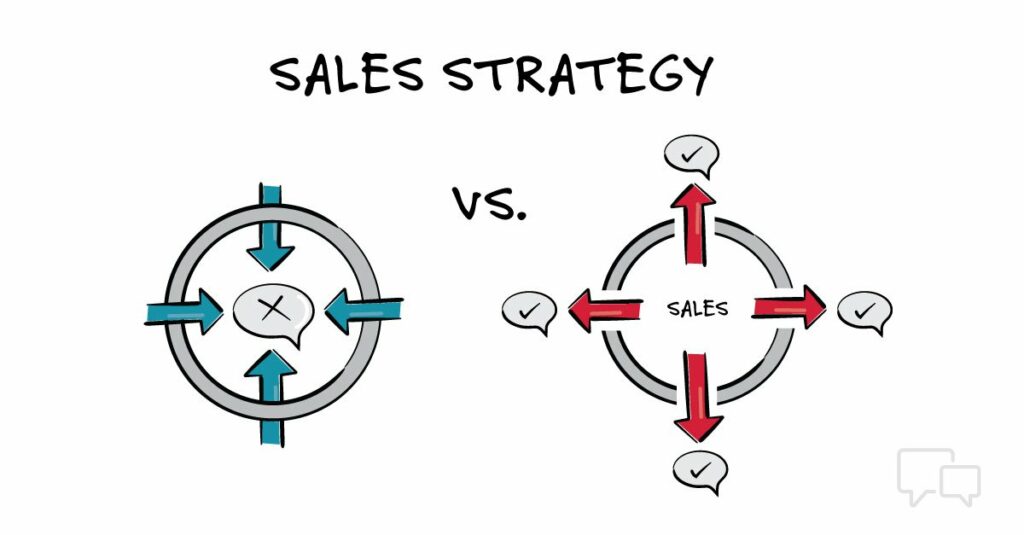How to Develop a Sales Strategy

Developing a sales strategy is essential for businesses to achieve sustainable growth, increase revenue, and effectively compete in their market. A well-crafted sales strategy aligns sales objectives with overall business goals, identifies target markets, defines sales tactics, and outlines a roadmap for achieving sales targets. This comprehensive guide explores key steps, best practices, and strategies to help businesses develop and implement an effective sales strategy.
Importance of Developing a Sales Strategy
A robust sales strategy provides several benefits:
- Revenue Growth: Increases sales and revenue through targeted approaches and effective sales tactics.
- Market Penetration: Expands market share by identifying and capitalizing on growth opportunities within target markets.
- Customer Acquisition: Attracts and acquires new customers while retaining existing ones through focused sales efforts.
- Competitive Advantage: Differentiates the business from competitors by leveraging unique value propositions and strategic positioning.
- Resource Optimization: Maximizes efficiency and effectiveness of sales activities, resources, and investments.
Key Steps to Develop a Sales Strategy
1. Set Clear Objectives and Goals
- Define Sales Objectives: Establish specific, measurable, achievable, relevant, and time-bound (SMART) sales goals aligned with overall business objectives.
- Quantify Targets: Determine sales targets, revenue projections, market share goals, and other key performance indicators (KPIs) to track progress and success.
2. Understand Your Market and Customers
- Market Analysis: Conduct thorough market research to identify target markets, customer segments, industry trends, and competitive landscape.
- Customer Profiling: Create detailed buyer personas based on demographics, behaviors, needs, pain points, and purchasing preferences to tailor sales strategies accordingly.
3. Develop Value Propositions and Differentiation
- Unique Selling Proposition (USP): Define compelling USPs that highlight what sets your products or services apart from competitors and resonate with target customers.
- Value Messaging: Craft clear and compelling value propositions that address customer challenges, emphasize benefits, and demonstrate value to prospective buyers.
4. Choose Sales Channels and Strategies
- Channel Selection: Identify appropriate sales channels (e.g., direct sales, online sales, distributors, partnerships) based on customer preferences, market reach, and business capabilities.
- Sales Tactics: Determine sales tactics and approaches (e.g., inbound sales, outbound prospecting, consultative selling, relationship selling) to engage prospects and convert leads into customers.
5. Allocate Resources and Set Budgets
- Resource Planning: Allocate resources, including sales team, technology, training, and support, to execute sales strategies effectively.
- Budgeting: Develop a sales budget that aligns with revenue targets, expenses, and anticipated ROI from sales activities and initiatives.
6. Create Sales Processes and Workflows
- Sales Pipeline: Establish a structured sales pipeline or funnel that outlines stages, milestones, and actions required to move prospects through the buying journey.
- Workflow Optimization: Streamline sales processes, automate routine tasks, and implement CRM systems or sales enablement tools to improve efficiency and productivity.
7. Implement Metrics and Performance Measurement
- Performance Metrics: Define key sales metrics (e.g., conversion rates, sales cycle length, average deal size, customer lifetime value) to measure sales team performance and track progress towards goals.
- Analytics and Reporting: Use data analytics, dashboards, and regular reporting to monitor KPIs, identify trends, and make informed decisions to optimize sales strategies.
Best Practices for Developing a Sales Strategy
- Collaboration: Foster collaboration between sales, marketing, and other departments to align strategies, share insights, and support integrated customer engagement.
- Continuous Learning: Stay informed about industry trends, competitor activities, and evolving customer needs to adapt and refine sales strategies accordingly.
- Customer-Centric Approach: Prioritize customer relationships, understanding their needs, providing solutions, and delivering exceptional experiences throughout the sales process.
- Feedback Loop: Solicit feedback from sales teams, customers, and stakeholders to evaluate strategy effectiveness, identify opportunities for improvement, and implement corrective actions.
- Adaptability: Remain flexible and agile in adjusting strategies, tactics, and resource allocation based on market dynamics, competitive pressures, and changing business conditions.
Conclusion
Developing a successful sales strategy requires a systematic approach, thorough planning, and continuous refinement to align with business objectives, engage target customers effectively, and drive revenue growth. By setting clear objectives, understanding market dynamics, developing compelling value propositions, selecting appropriate sales channels, allocating resources wisely, optimizing sales processes, measuring performance metrics, and embracing best practices, businesses can create a structured framework for achieving sales success and sustaining competitive advantage in today’s dynamic marketplace. Investing in a well-defined sales strategy not only enhances sales team effectiveness but also strengthens customer relationships, fosters business growth, and positions organizations for long-term success and profitability.




